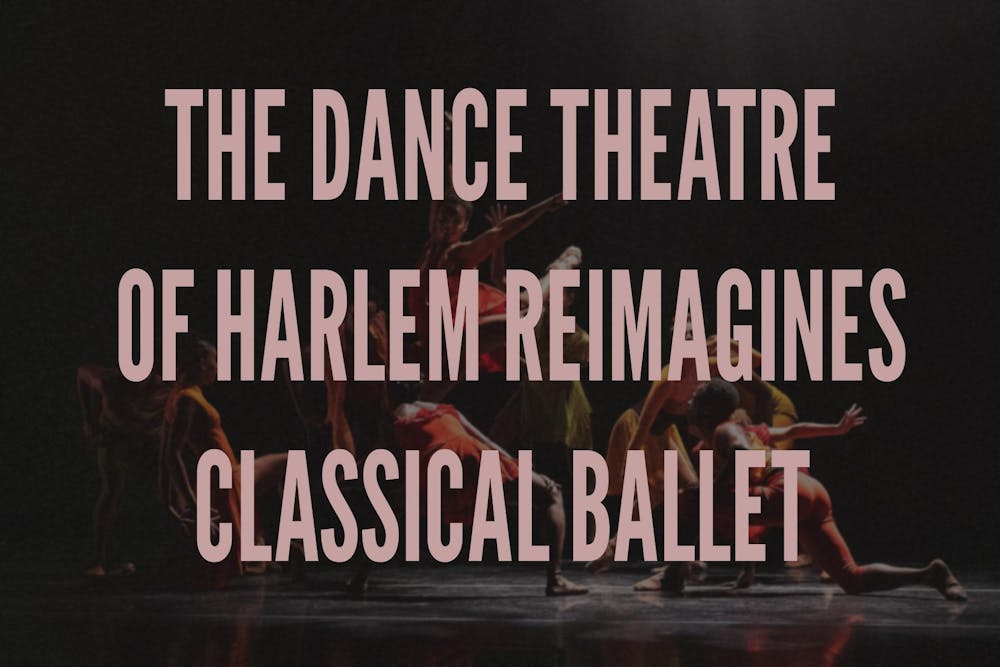This past weekend, I had the privilege of bearing witness to the expression of stories that have never been told before by people who had previously been unable to tell them. Dance Theatre of Harlem, the first African-American ballet company founded in 1969 amid the injustices and frustrations of the civil rights movement, paid a visit to Notre Dame’s DeBartolo Performing Arts Center on Saturday, gifting us two joyous, innovative shows each presenting three distinct pieces that celebrate and spotlight black creativity.
The curtain rose, and we were greeted by the vibrant, eclectic notes of Stevie Wonder’s best. The dancers, sporting creamy orange costumes, danced to numbers that drew inspiration from the messages articulated within Wonder's brew of funk, soul, jazz, pop and more. As Wonder‘s music was remembered, his commentary and criticism of race, spirituality and society as a whole was illustrated by the dancers‘ emotive interpretation of his songs “Look Around,” “You Haven’t Done Nothin’,” “Heaven Is 10 Zillion Light Years Away,” “Village Ghetto Land,” “Saturn” and “Higher Ground.” One would not typically think that Stevie Wonder‘s songs could be performed as ballet, yet the Dance Theatre of Harlem‘s “Higher Ground” skillfully proved otherwise.
The program’s second piece focused on the life of Hazel Scott, the first African-American woman to host her own television show, and as composer Erica Lewis-Blunt described her, the Beyoncé of her time. Scott has become a lost figure, where choreographer Tiffany Rea-Fisher states, “Her erasure from history was intentional because she was so audacious. People actively tried to erase her … so to be able to not only not erase her but celebrate her for all that she is and was is really super-super exciting.” Aside from her musical excellence, Scott was an outspoken civil rights activist, ultimately exiled from the country at the height of McCarthyism to make a home in Paris. “Sounds of Hazel” reanimated the legacy of Hazel Scott, flowing from her early life in Trinidad (one of my favorite pieces as it reminded me of my own Puerto Rican roots) to her later successes as the musician and entertainer who played two pianos through a fabulous dance to “The Jeep is Jumpin’.”
The ballet came to a close with William Forsythe’s “Blake Works IV (The Barre Project).” The dancers focused on a ballet barre at the center of the stage, showcasing their precise, poised technique to the moody, electric composition of James Blake. The dancers moved fluidly in bursts of velvet purple, each gracing on and off stage to individually boast their own diverse skills. The ensemble’s remarkable talents and profound displays of feeling made for an entrancing, immersive experience.
Ultimately, I felt that the Dance Theatre of Harlem refreshed my own preconceptions of traditional ballet while unwaveringly continuing to dismantle the Eurocentric imaginations of beauty and artistic restrictions within the ballet world. Dance Theatre of Harlem has broken the mold, reshaping understandings of ballet while redefining what it means to challenge, and subsequently strategically recognize and employ, these prejudiced biases in their steadfast efforts to reimagine Blackness in ballet.










